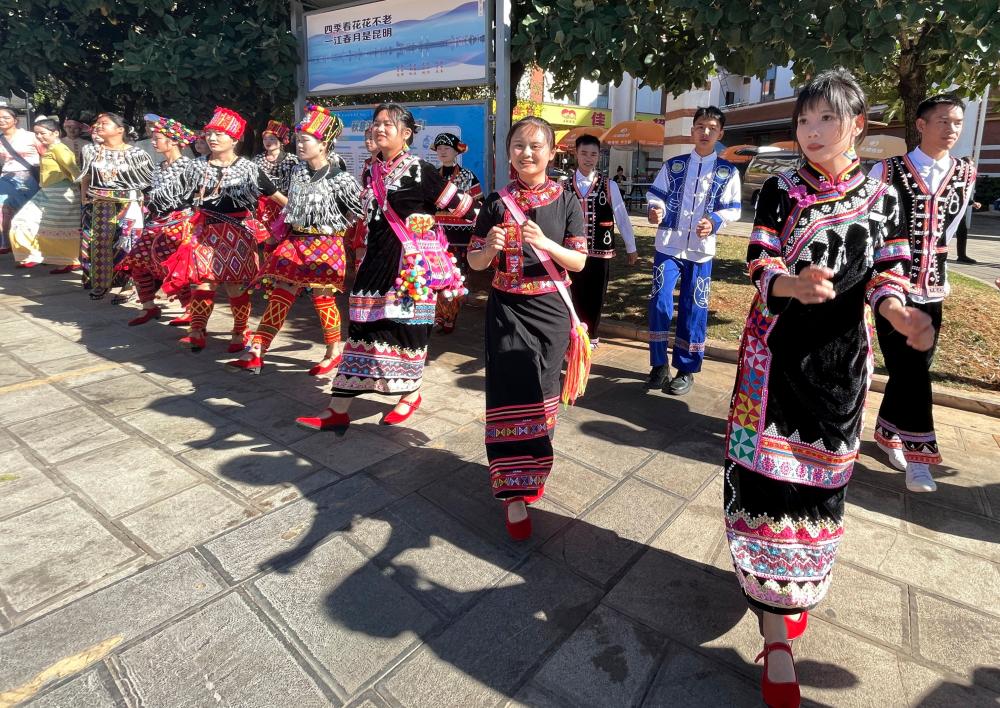By Hasnah Jusid
KUNMING (China), June 21 (NNN-Bernama) – The writer was taken aback when a tall and bespectacled man greeted her in Bahasa Melayu (Malay language).
“Apa khabar (How are you)?” he asked as soon as the writer stepped into Yunnan Minzu University in Kunming, the capital city of China’s Yunnan province.
Initially, the writer thought he was not a Chinese citizen but realised he was one when he introduced himself as Zhao Ran, a Bahasa Melayu lecturer at the university’s School of Southeast Asian and South Asian Language and Culture Studies. He has even given himself a Malay name – Bulan.
“Don’t be surprised,” he said. “Our university here teaches many languages and one of them is Bahasa Melayu.”
Zhao, who has been teaching Bahasa Melayu for 13 years, said the university started offering Malay language studies in 2010 and currently has about 80 students on its campus pursuing a four-year course in this field.
There are four lecturers there teaching Bahasa Melayu, all of them Chinese nationals who mastered the language whilst studying at the Beijing Foreign Studies University.
WELL-KNOWN ETHNIC UNIVERSITY
The writer had the opportunity to visit Yunnan Minzu University when she participated in the China-Asia Pacific Press Centre 2022 programme from June to November last year at the invitation of the China Public Diplomacy Association.
Established on Aug 1, 1951, Yunnan Minzu University is among China’s oldest educational institutions catering to its minority ethnic groups. It is well-known for its strong emphasis on education, research and preservation of minority ethnic cultures.
Over 15,000 students from 50 Chinese ethnic groups are currently studying at the university which offers a variety of graduate and undergraduate programmes. It is particularly known for its language, ethnic minority culture and anthropology studies.
Referring to its School of Southeast Asian and South Asian Language and Culture Studies, Yunnan Minzu University president Zhang Qiaogui said: “This school aims to cultivate language-oriented and professional talents who will be capable of speaking the languages of South and Southeast Asian countries, and we have set up a full range of teaching programmes of 15 official languages of all 14 South and Southeast Asian countries.
“They (languages) include Thai, Burmese, Vietnamese, Lao, Cambodian, Malay, Indonesian, Hindi, Bengali, Filipino, Tamil, Pashto, Sinhalese, Nepali and Urdu, which will eliminate language barriers, promote cultural interaction and people-to-people ties.”
Liu Zhi Hui, a second-year Malay studies student belonging to the Va ethnic group, said he harbours hopes of continuing his studies in Malaysia and working there.
Liu, whose Malay name is Zarif, added he will leave for Penang in October this year for a stint at Universiti Sains Malaysia under a student exchange programme.
HISTORY OF MALAY STUDIES IN CHINA
The teaching and learning of Bahasa Melayu in China has its beginnings in the 1960s, with the Beijing Foreign Studies University (BFSU) being the first tertiary institution to teach the Malay language and efforts towards this end pioneered by Professor Wu Zongyu.
Dewan Bahasa dan Pustaka (Malaysia’s Institute of Language and Literature) board of directors chairman Prof Dr Awang Sariyan said BFSU’s Malay Language Centre was established in 1997 following the signing of an agreement by the Malaysian and Chinese governments to collaborate on education, notably with regard to the teaching of Bahasa Melayu in China.
In 2005, the Malay Language Centre was upgraded and renamed the Malay Chinese Studies Centre, which was officially made the base for scholarly activities and development of Malay language, literature and culture in China.
Awang, who was appointed honorary advisor of the Malay Chinese Studies Centre at BFSU two months ago, said there are now 13 universities in China offering a four-year degree programme in Malay studies. There is also a college offering a three-year diploma course in Malay studies.
The universities and college concerned are located in Beijing, Tianjin, Kunming, Guangzhou, Nanning, Xian, Luoyang and Hainan.
“Several other universities such as those in Hebei and Sichuan offer Bahasa Melayu as an elective course,” Awang added.
Last year, China launched the China Accreditation Test for Translators and Interpreters (CATTI) in the Chinese and Malay languages. It is a national-level vocational qualification test conducted by China’s Ministry of Human Resources and Social Security and implemented by its International Communications Department.
CATTI was launched to strengthen the management of China’s translation industry, standardise the translation work market and improve the quality of its translators and interpreters.
— NNN-BERNAMA






